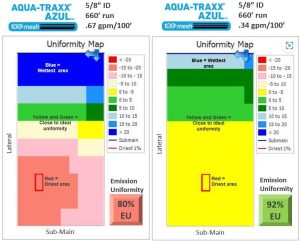Original post by Acreage Life
Three years ago, Carol Huether, decided it was time to change careers and reinvent herself. So, she took her years of experience managing other people’s businesses and turned those skills into a successful organic vegetable and herb farm in Spring Creek, Nev.
As she transformed her 10 acres into a productive operation, Huether wasn’t working alone. USDA agencies, such as the Natural Resources Conservation Service (NRCS) and Farm Service Agency (FSA), worked closely with Huether to create a sustainable operation, despite the region’s challenging climate.
“I wouldn’t have been able to even start this kind of operation if it hadn’t been for all the agencies coming together to help me under the umbrella of the USDA,” Huether says.
Summers are hot, and dust storms prevail. Winters are bitter cold, and high winds can tear and destroy unprotected plants. This harsh climate also leaves some farmers with a short growing season of 85-90 days to make a living.
Huether quickly learned she needed a way to protect her growing herbs and vegetables from the harsh elements. Her local NRCS field office told her about seasonal high tunnels, or hoop houses.
High tunnels are made of plastic or metal pipe and covered with sheeting, typically made of plastic. Unlike greenhouses, they require no energy to heat, instead relying on natural sunlight to create favorable conditions for growing vegetables and other specialty crops.
“I have probably extended my growing season a good six weeks on either end,” she says. Inside the high tunnel, she uses drip irrigation, which emits water by each of the thyme, rosemary, oregano and tarragon plants, ensuring water isn’t wasted.
The high tunnel’s sides can be adjusted depending on weather conditions. NRCS photo.
USDA’s StrikeForce for Rural Growth and Opportunity initiative funded the high tunnel, and other NRCS conservation programs funded the irrigation system and other practices on her farm. The initiative addresses high-priority funding needs in rural communities in 16 states, including Nevada.
Huether’s farm is an expansive, well-manicured garden full of vegetables, boasting vibrant colors of growing herbs which can be seen just waiting to be harvested and sold.
Because there aren’t many agriculture producers in her area growing fresh, local, affordable food, she now has a steady stream of customers, including people who stop by the farm and buyers from local businesses and restaurants.
“I’m continuing to grow my business through the local restaurants,” she says. “More and more of them are excited about taking on my local produce in season.”
“This community has been wonderful to us. They were so welcoming, and they really love seeing what I’m doing. They can’t wait to see what I am going to come up with next.”




